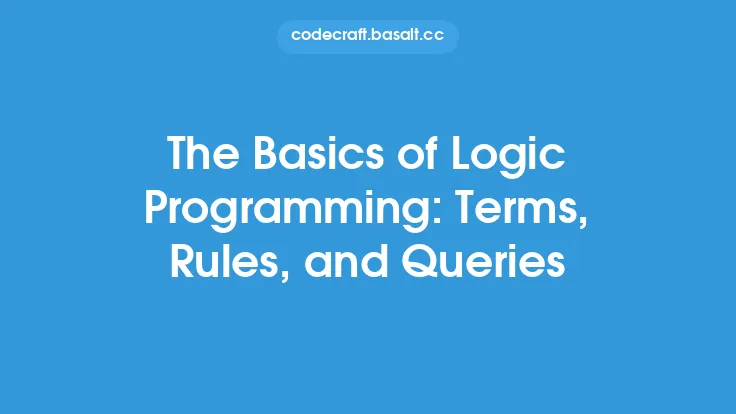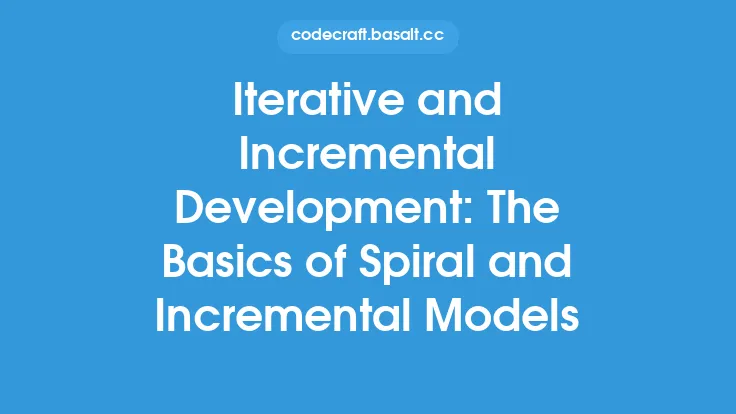In the realm of constraint programming, a fundamental concept is the notion of constraint satisfaction, which involves finding a solution that satisfies a set of constraints imposed on a set of variables. This concept is crucial in modeling and solving complex problems, and it is essential to understand the basics of constraint satisfaction to effectively utilize constraint programming. At the heart of constraint satisfaction are three key components: variables, domains, and constraints.
Variables
Variables are the core elements in constraint satisfaction, representing the unknown quantities that need to be determined. In constraint programming, variables are typically defined over a non-empty set of possible values, known as the domain. Each variable has a specific domain associated with it, which defines the set of values that the variable can take. For instance, in a scheduling problem, a variable might represent the start time of a task, and its domain might be the set of all possible start times. Variables can be categorized into different types, such as integer variables, boolean variables, or set variables, depending on the nature of the problem being modeled.
Domains
Domains play a vital role in constraint satisfaction, as they define the set of possible values that a variable can take. A domain can be finite or infinite, and it can be discrete or continuous. In constraint programming, domains are often represented as a set of discrete values, such as integers or strings. The domain of a variable can be restricted by constraints, which reduce the set of possible values that the variable can take. For example, in a resource allocation problem, the domain of a variable representing the amount of resources allocated to a task might be restricted by a constraint that ensures the total amount of resources allocated does not exceed the available resources.
Constraints
Constraints are the rules that govern the values that variables can take. They define the relationships between variables and restrict the set of possible solutions. Constraints can be categorized into different types, such as unary constraints, binary constraints, or n-ary constraints, depending on the number of variables involved. Unary constraints involve a single variable and restrict its domain, while binary constraints involve two variables and define a relationship between them. N-ary constraints involve multiple variables and define a relationship among them. Constraints can also be categorized as hard or soft, depending on whether they must be satisfied or can be violated with a penalty.
Constraint Representation
Constraints can be represented in various ways, including extensional representation, intensional representation, and graphical representation. Extensional representation involves listing all possible combinations of values that satisfy the constraint, while intensional representation involves defining a predicate or a function that checks whether a given combination of values satisfies the constraint. Graphical representation involves representing the constraint as a graph, where the nodes represent the variables and the edges represent the relationships between them. The choice of representation depends on the nature of the problem and the requirements of the application.
Constraint Satisfaction Problems
A constraint satisfaction problem (CSP) is a triple consisting of a set of variables, a set of domains, and a set of constraints. The goal of a CSP is to find an assignment of values to the variables that satisfies all the constraints. CSPs can be solved using various techniques, including systematic search, local search, and constraint propagation. Systematic search involves exploring all possible assignments of values to the variables, while local search involves exploring a subset of possible assignments. Constraint propagation involves reducing the domains of the variables based on the constraints, which can help to prune the search space and improve the efficiency of the search.
Properties of Constraint Satisfaction Problems
CSPs have several properties that are important in understanding their behavior and solving them efficiently. One key property is consistency, which refers to the property that a CSP has a solution if and only if it is consistent. A CSP is consistent if and only if it has a solution that satisfies all the constraints. Another key property is satisfiability, which refers to the property that a CSP has a solution if and only if it is satisfiable. A CSP is satisfiable if and only if it has a solution that satisfies all the constraints. CSPs can also be categorized as tractable or intractable, depending on whether they can be solved efficiently or not.
Applications of Constraint Satisfaction
Constraint satisfaction has numerous applications in various fields, including artificial intelligence, computer science, and operations research. It is used in scheduling, resource allocation, planning, and decision-making, among other areas. Constraint satisfaction is particularly useful in modeling and solving complex problems that involve multiple variables and constraints. It provides a powerful framework for representing and solving problems in a declarative way, which can help to improve the efficiency and effectiveness of the solution process. By understanding the basics of constraint satisfaction, including variables, domains, and constraints, developers can effectively utilize constraint programming to model and solve complex problems in various domains.





